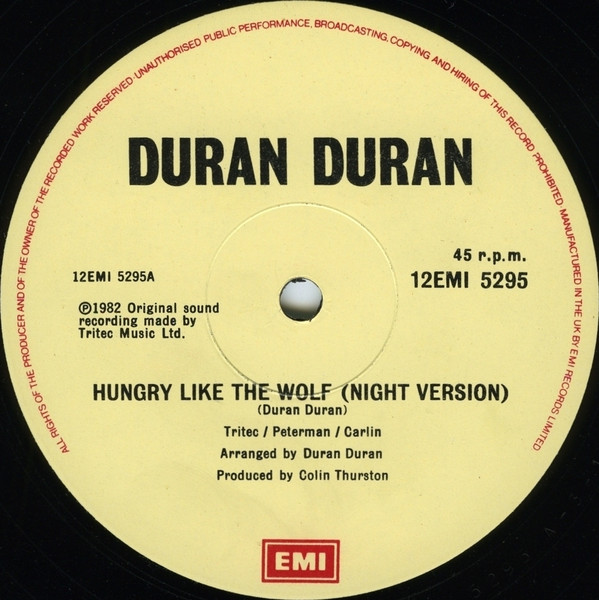
“Hungry Like the Wolf” wasn’t Duran Duran’s first single, but it was their first big smash in the States, making them huge on radio and (especially) MTV. Does it help that the song is so vague - and undeniably catchy - that it mostly just feels harmless? Almost certainly. Is it mostly just another variation on the perennial “Girl, I’m really into you” tune? Oh, probably. Is it a song about treating your mate like prey? Possibly. For all the years that “Hungry Like the Wolf” has been in the world, listeners generally haven’t wrestled with what Simon Le Bon has been singing about. It’s important to suss out the iffy connotations of certain songs - how their declarations of true love are actually tangled up in gross macho attitudes or potentially stalkerish behavior - while also acknowledging that, sometimes, the lyrical content is so dopey that it’s more innocuous than actively troublesome. They think the song is stupid and sexist, and they do nothing to hide that fact. They play “Hungry Like the Wolf” in a jokey, snotty way. The cover is less a tribute than a driveby dunking that seeks to call out what they perceive as the song’s gross sexual/primal metaphor - carnal desire boiled down to its animalistic, predatory urges. And when I catch her - being the predator, the hunter - I’m gonna kill her,” he says with sarcasm in his voice. “Hungry like the Wolf” entered right into pop history and Duran Duran history, and many years later it remains one of the most beloved songs by fans, a song that they must sing in every concert.Their version kicks off with frontman Aaron Barrett “explaining” the song’s lyrics. Before that round of scenes Simon relied on a local hairdresser to freshen up his sunstrokes, but the girl felt the emotion of the moment, and hair came out of an unwatchable orange. And in many scenes Simon wears a hat that really wasn’t supposed to be there. The Durans are all chasing for the wolf Simon, but in turn he is engaged in another, more sentimental chase. A bit of Indiana Jones and a bot of Apocalypse Now, in short. Once again directed by the great Russell Mulcahy, it was filmed in Sri Lanka, with crowded local sceneries that duran Duran threw upside down, and jungle chases. The video contributed to the success of the song and the album. The laugh at the beginning of the song and the moan at the end were courtesy of Nick Rhodes’ then-girlfriend. The creativity of the group now had no limits, and in fact this album was full of pearls, such as “Save a Prayer”, “The Chauffeur”, “New Religion” and the same “Rio”. This song, according to the Duran themselves, was composed in a very short time, probably within an afternoon: everyone had a clear idea of what to do with their own instrument, and Andy Taylor added an extra touch: passionate about music and electronic instruments, he connected some new instruments produced by Roland, including electronic drum machines and synthesizers, and this led to new, modern, irresistible sounds. In fact Simon Le Bon had already understood that the coherence of the text was a very secondary aspect: the important thing was to use words and phrases that sounded good and were kind of weird. The song is loosely inspired by the Red Riding Hood fairy tale, but only because it speaks of chases, hunting, and of course the wolf. Something from the first album remains: maybe it’s the “bop bop bop” of “Planet Earth” that now becomes “tu ttu ttu ru” in the new song, but otherwise, a lot has changed. The new romantic look of “ Planet Earth” seemed decades behind, compared to the glamorous look that Duran Duran showed in “Hungry Like the Wolf”. Six months earlier they had released another single, “My own way”, which had been a bit of a bridge between the two versions of Duran. They released this single on the previous week, and it had found with resounding success.


With their first album Duran Duran certainly made themselves known and appreciated, but the amazing success of the album “Rio” set the stage for their great leap towards worldwide success and fame. On that day, Duran Duran released an album that would change the pop history in Europe.


 0 kommentar(er)
0 kommentar(er)
